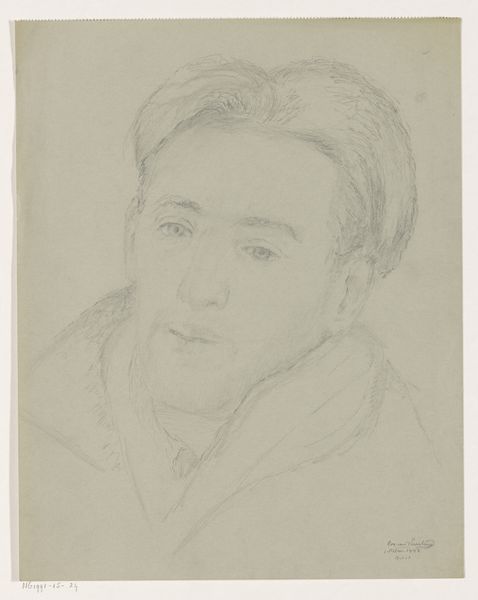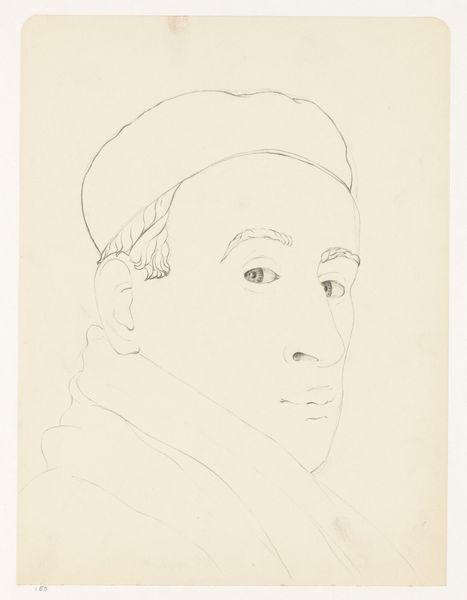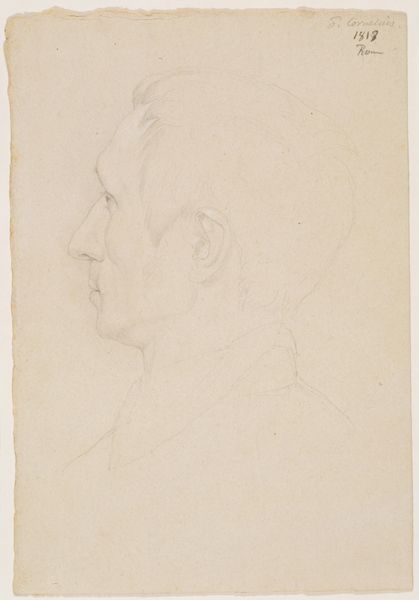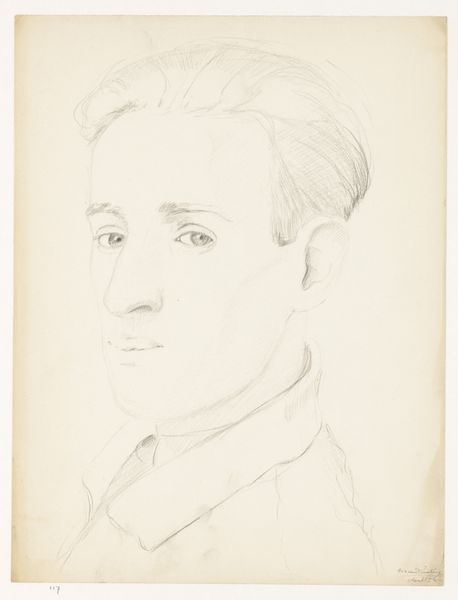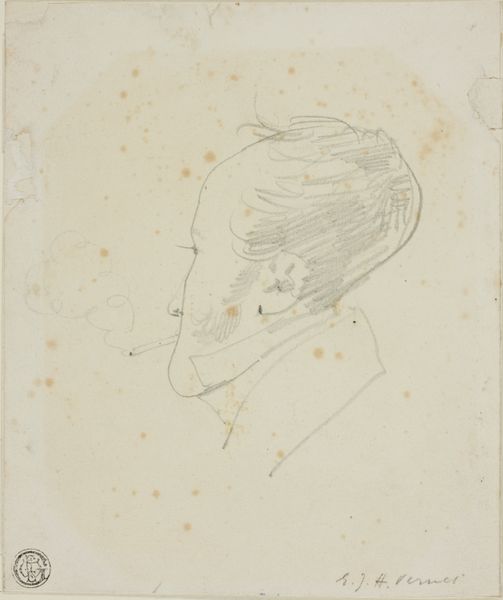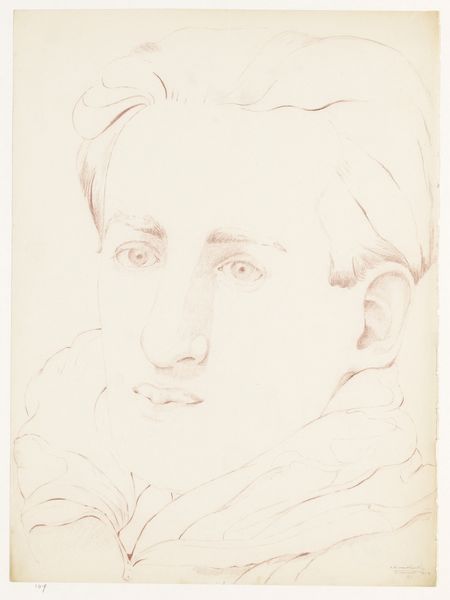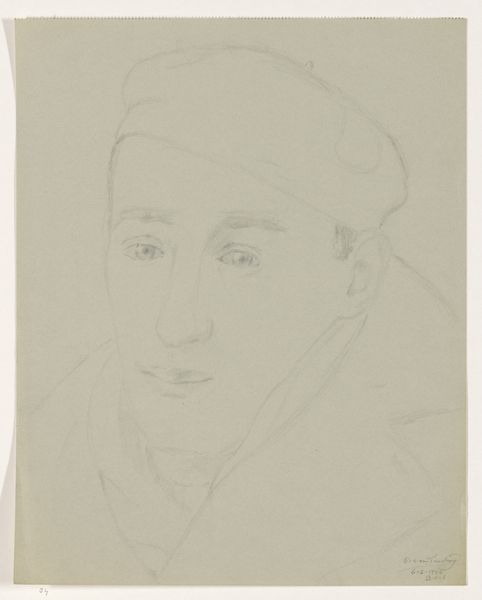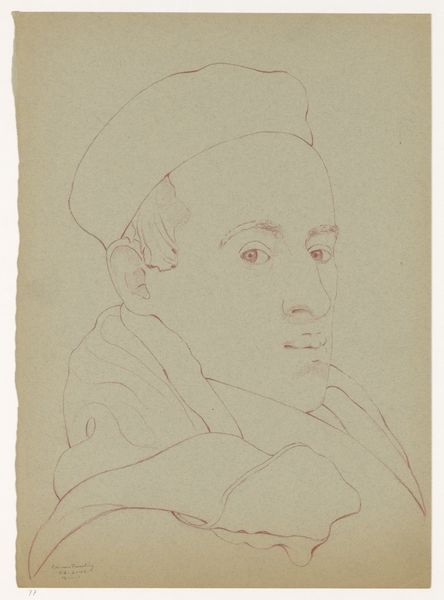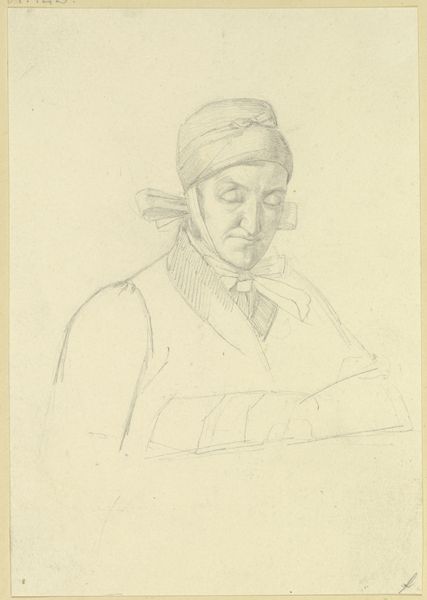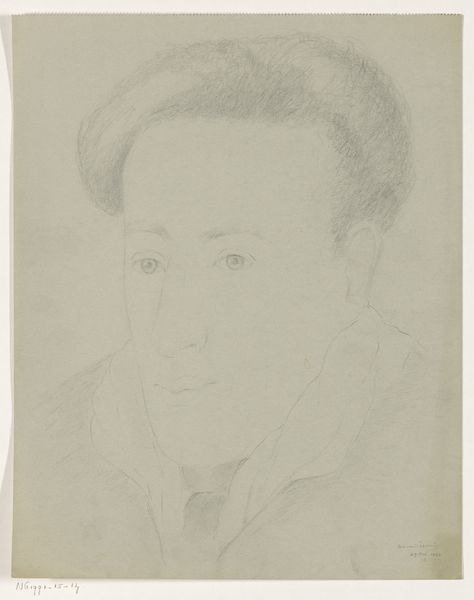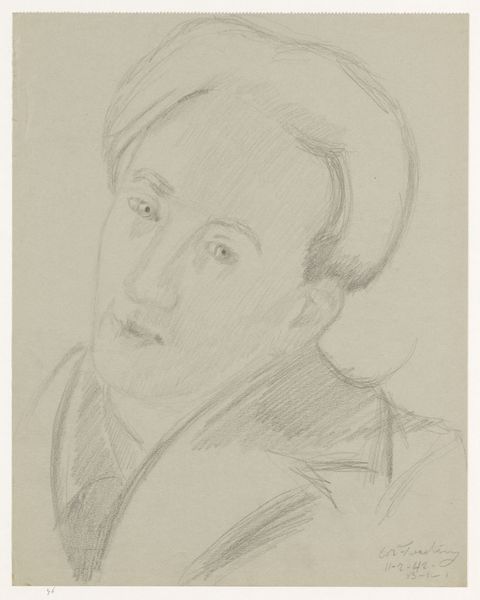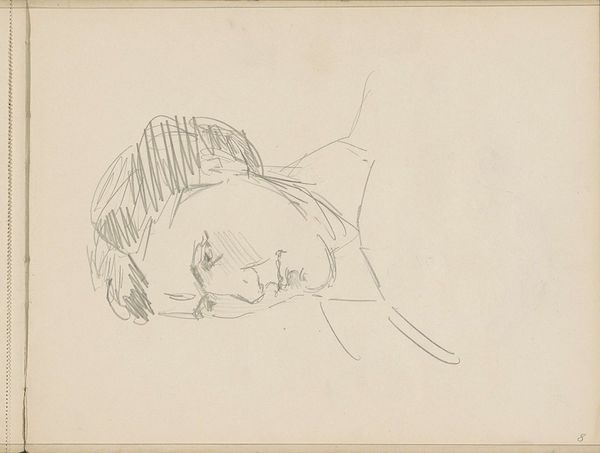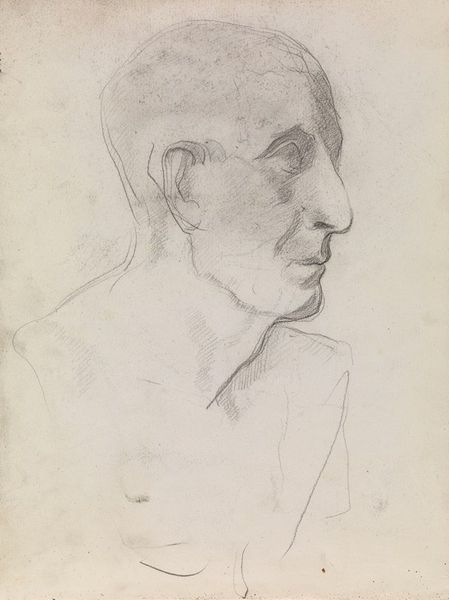
drawing, pencil
#
portrait
#
pencil drawn
#
drawing
#
facial expression drawing
#
light pencil work
#
self-portrait
#
pencil sketch
#
caricature
#
figuration
#
portrait reference
#
pencil drawing
#
pencil
#
animal drawing portrait
#
portrait drawing
#
pencil work
Dimensions: height 31.0 cm, width 24.5 cm
Copyright: Rijks Museum: Open Domain
Curator: Welcome. Before us hangs a delicate self-portrait by Cor van Teeseling, simply titled "Zelfportret: B-1-1, 5 februari." The piece is a pencil drawing and is believed to have been created around 1942. It resides here at the Rijksmuseum. Editor: The sketch has a fleeting quality, doesn’t it? It’s all soft lines and light shading. It almost feels like a memory trying to surface. There's a melancholic air to the gaze, averted, contemplative. Curator: Teeseling's life provides context for that melancholic feel. During World War II, as the German occupation intensified in the Netherlands, artists like him faced immense pressure. Some collaborated, while others resisted, often through subtle forms of expression in their art. This self-portrait might reflect that inner turmoil. Editor: Absolutely. Consider the date – February 5th, 1942. The Nazis were tightening their grip; anti-Jewish laws were escalating. A self-portrait at that moment becomes an act of defiance, of asserting identity in the face of erasure. Look how his neck almost disappears into the garment or scarf. Curator: Note also the almost classical way the artist portrays themself; one could easily interpret the choice as both an intellectual and deeply human assertion during dehumanizing times. There’s also the history of portraiture, how it often functioned as a display of power and status. For Teeseling, stripped of autonomy under occupation, perhaps the act of portraying himself was a reclamation of agency. Editor: Right. It's about visibility. It subtly asks us to bear witness to his existence and experience. The light pencil work emphasizes fragility, reminding us of the vulnerability of human life under oppressive regimes. A poignant comment, I think, considering both gendered and class implications. Curator: What I also find remarkable is the use of a medium as unassuming as pencil. It speaks to the limited resources and perhaps the need for discretion during those times. It also makes it accessible, immediate. Editor: True. And that simplicity amplifies the work’s emotional impact. No grand gestures, just quiet resilience. The averted gaze isn’t weakness; it’s a conscious turning away from the horror, a retreat inward to preserve oneself. Thank you for guiding me through the cultural history around this work; I find the piece extremely thought provoking. Curator: My pleasure. This portrait is a powerful reminder of the individual spirit persevering under unimaginable circumstances.
Comments
No comments
Be the first to comment and join the conversation on the ultimate creative platform.
